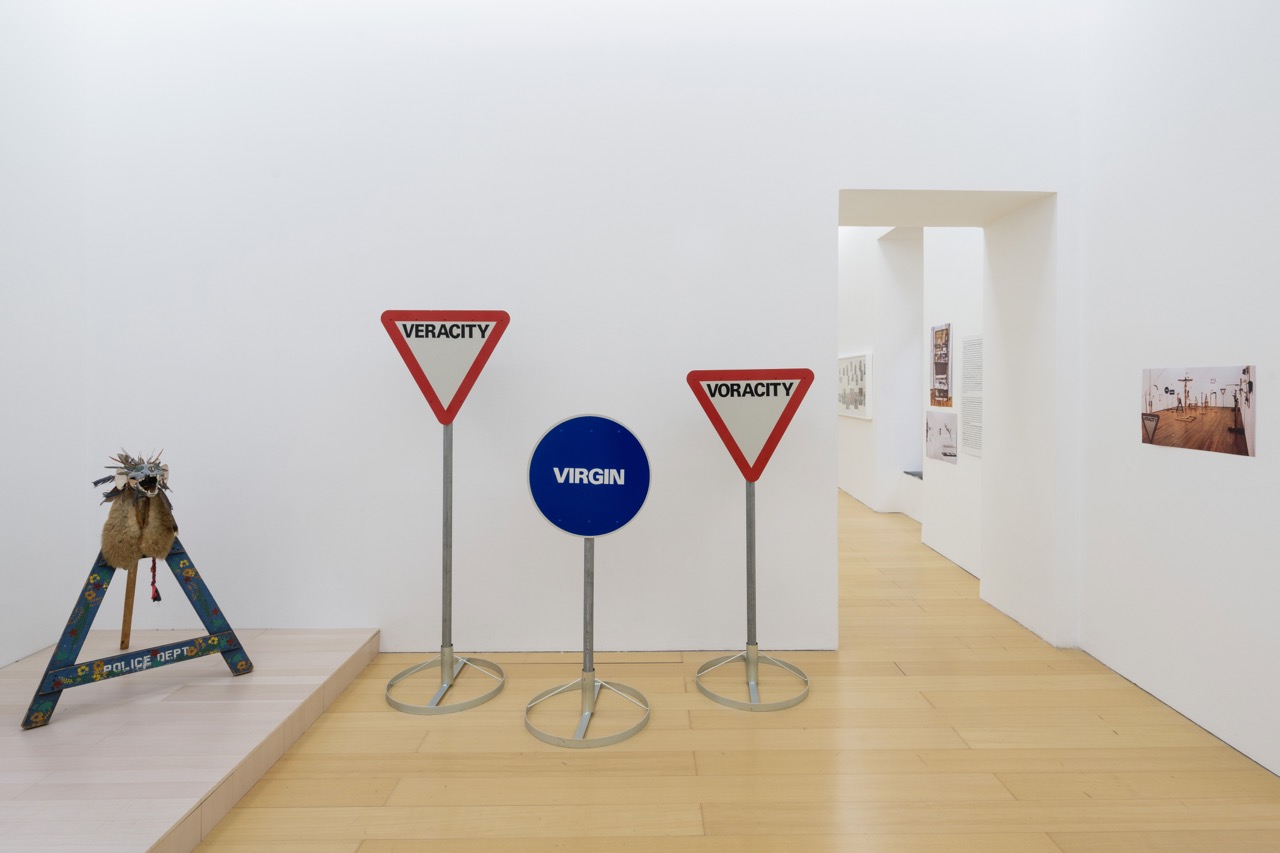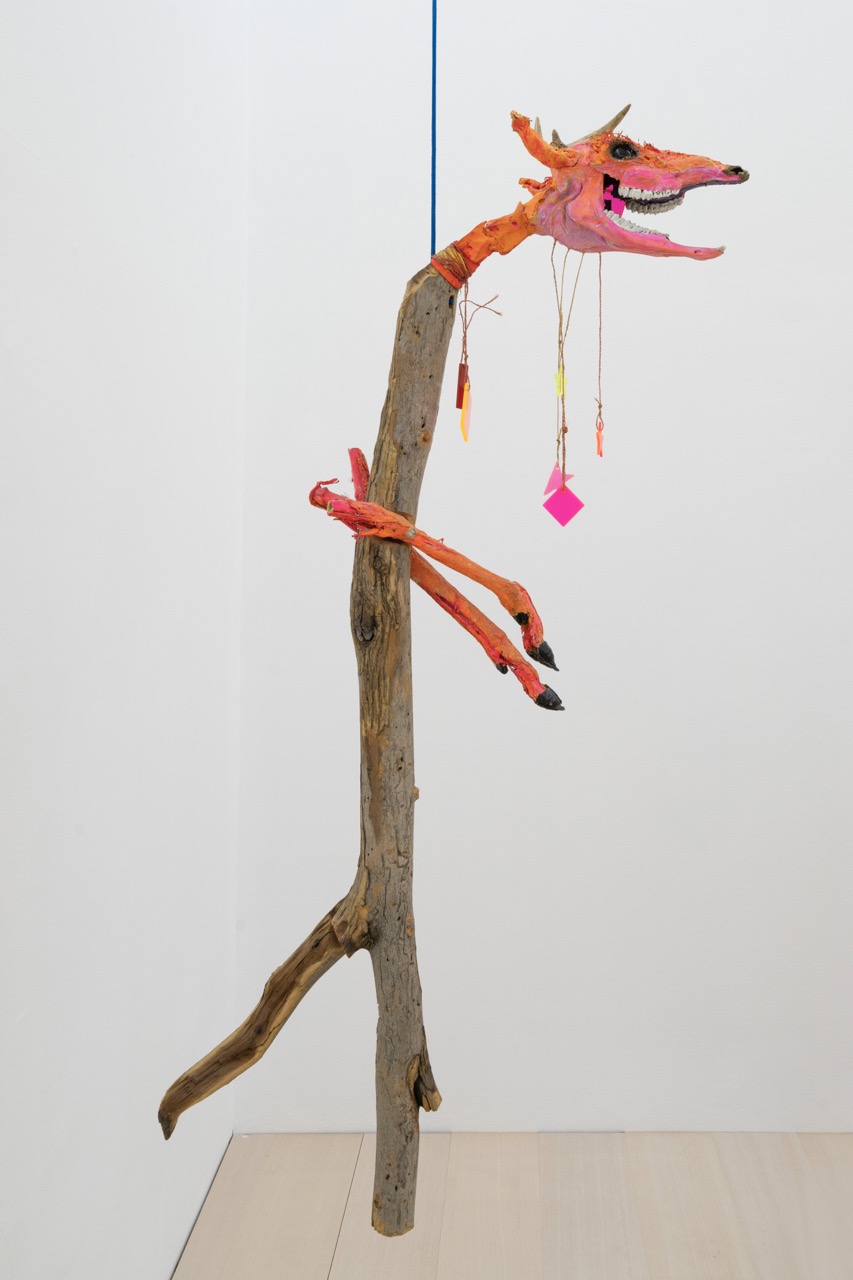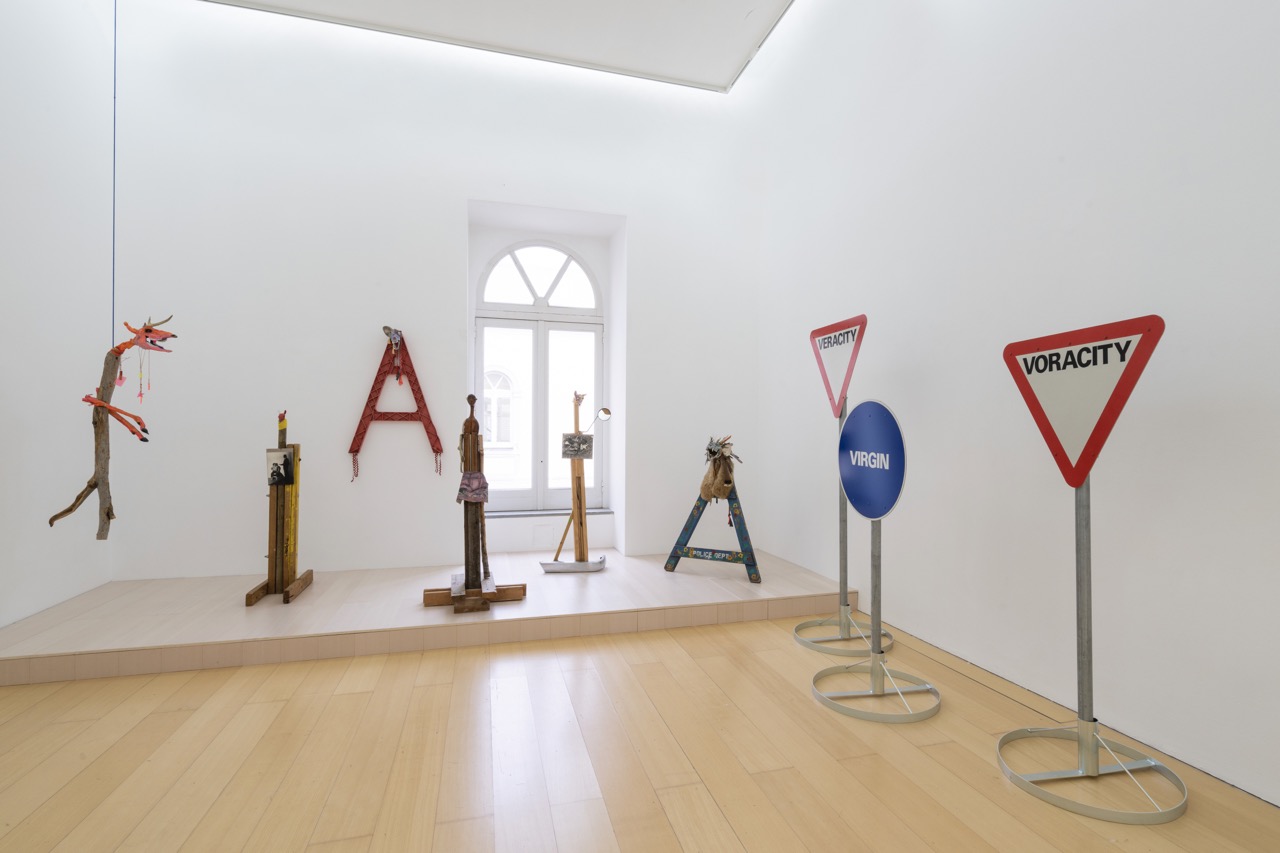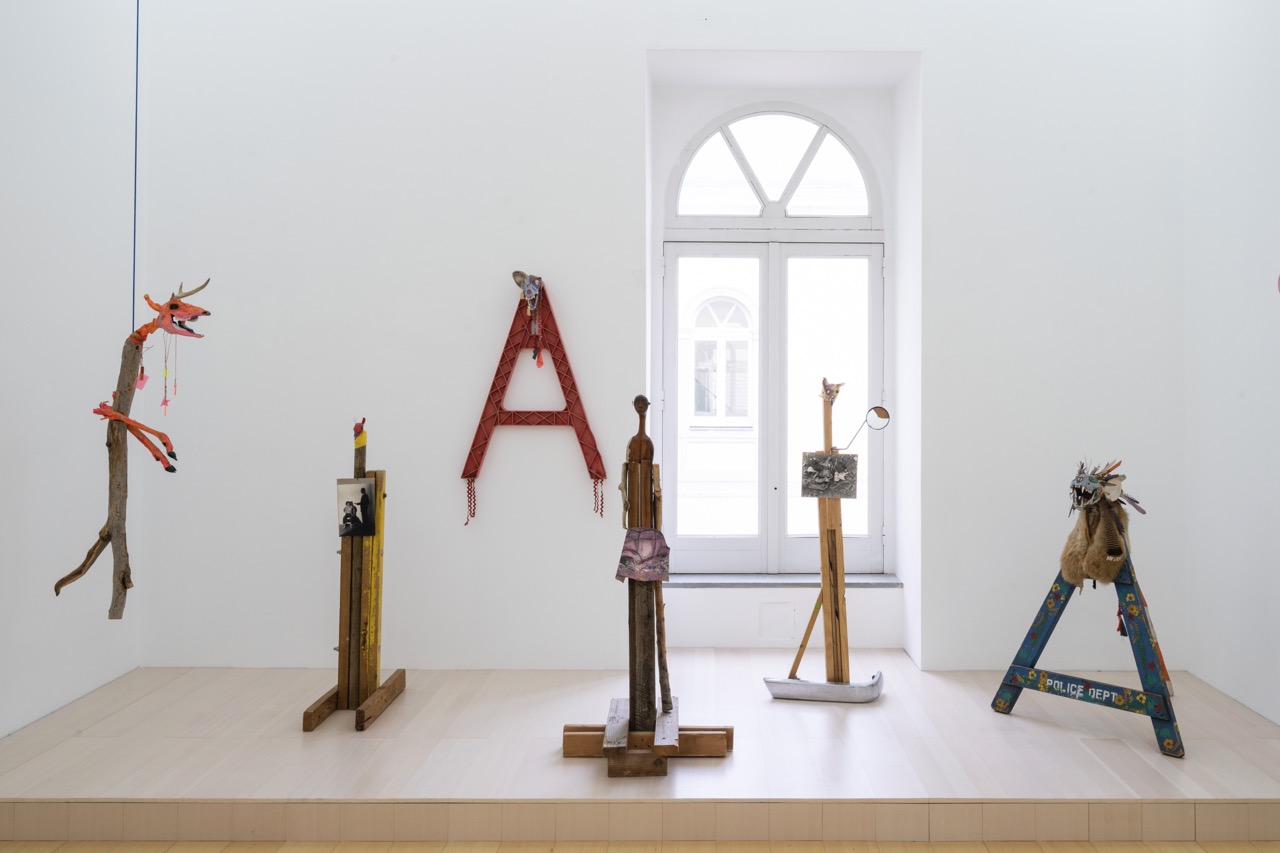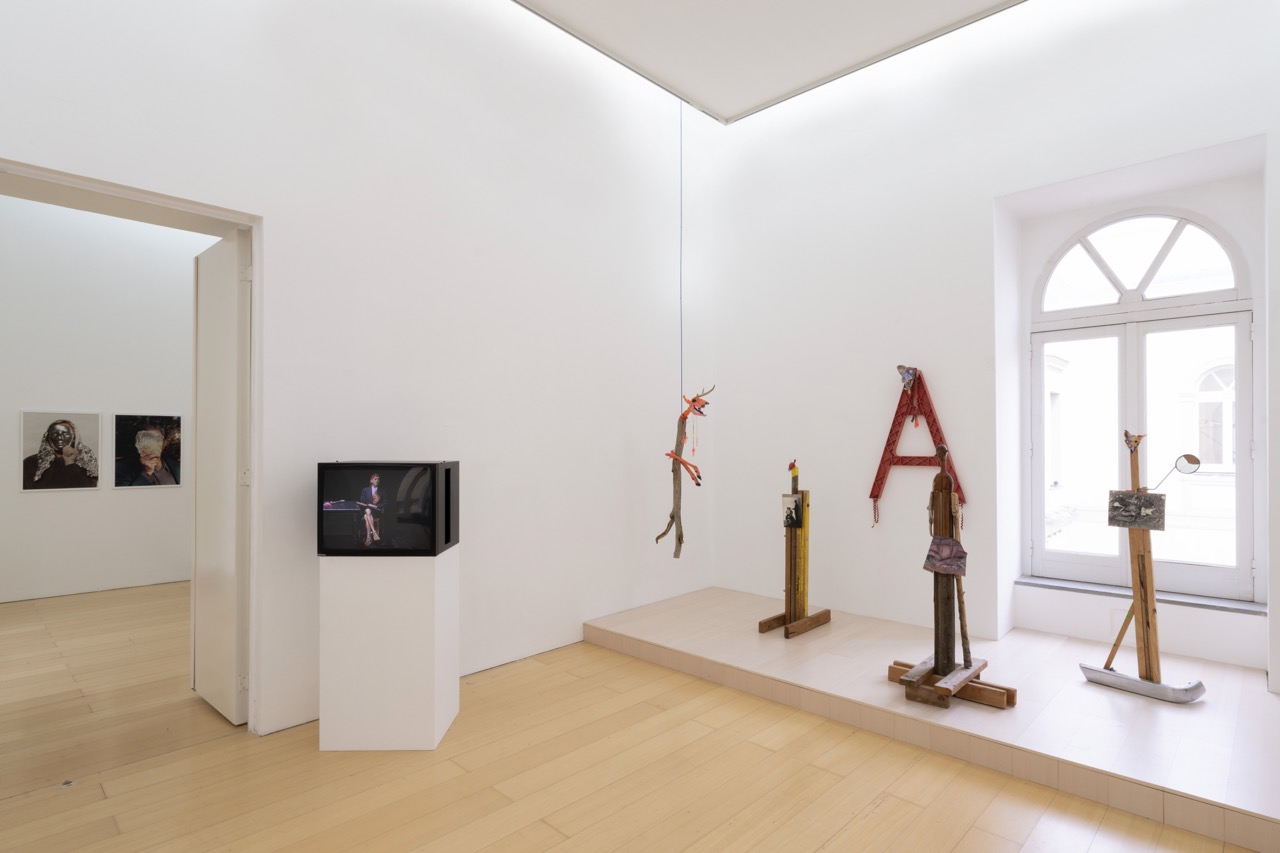This room points to Durham’s experimental spatial strategies in early exhibitions such as ‘A certain lack of coherence’ (Palais des Beaux Arts, Brussels, 1993) and ‘Original Re-Runs’ (Institute of Contemporary Art, London, 1994), where he created dense installations that brought together constellations of individual works. The resulting feeling of overabundance created new readings and confounded univocal interpretations. Each individual work also generates multiple meanings: the sculpture Armadillo (1991) displays a photograph of a man in a suit, Durham himself, threatening another man with what seems to be a gun but what is in fact the head of an armadillo,
a visual-linguistic pun. In A dead deer (1986), the animal’s spinal column is replaced with a sapling, forming a lively hybrid creature dancing on a string. Racoon (skunk) (1989) displays a broken mirror that returns the viewer’s gaze, what the artist calls a ‘cheap trick’.
Durham playfully explores ‘folk art’ aesthetics, side-lined in the discourse of modern art in Europe and North America. These works were in fact produced at around the time when ‘The Indian Arts and Crafts Act’ was passed into law in 1990 and began to be enforced in the United States, obliging First Nations artists to demonstrate proof of enrolment in a federally recognized tribe in order to be allowed to exhibit and sell works including elements relating to Indigenous heritage. While the Act’s stated aim was to prevent the falsification of arts and crafts products, in effect it enforced a process of ‘authenticating’ and registering identity under the same legal system that expropriated and privatised collectively held land from many First Nations in North America. Durham was opposed to US government management of indigenous affairs; he was not enrolled and this led to the cancellation of several exhibitions in the United States.
In the performance Crazy for life at the Bessie Schonberg Theatre in New York in conjunction with the exhibition ‘The Decade Show: Frameworks of Identity in the 1980s’, Durham appears wearing a suit jacket painted with exposed vital organs, literally ‘wearing his heart on his sleeve’. Sitting next to him is a portrait of George Washington, whom he thanks for ‘always having been there for him’, and then proceeds to read from his own writings, including citing a satirical memoir by Crazy Horse, the famous leader of the Sioux Indians, who was fatally bayoneted by a U.S. guard after resisting confinement. Durham’s speech is punctuated by comical misquotations, puns and songs in various languages.
Jimmie Durham: humanity is not a completed project, installation view of the exhibition at the Madre museum, 2023. Photo by Amedeo Benestante
